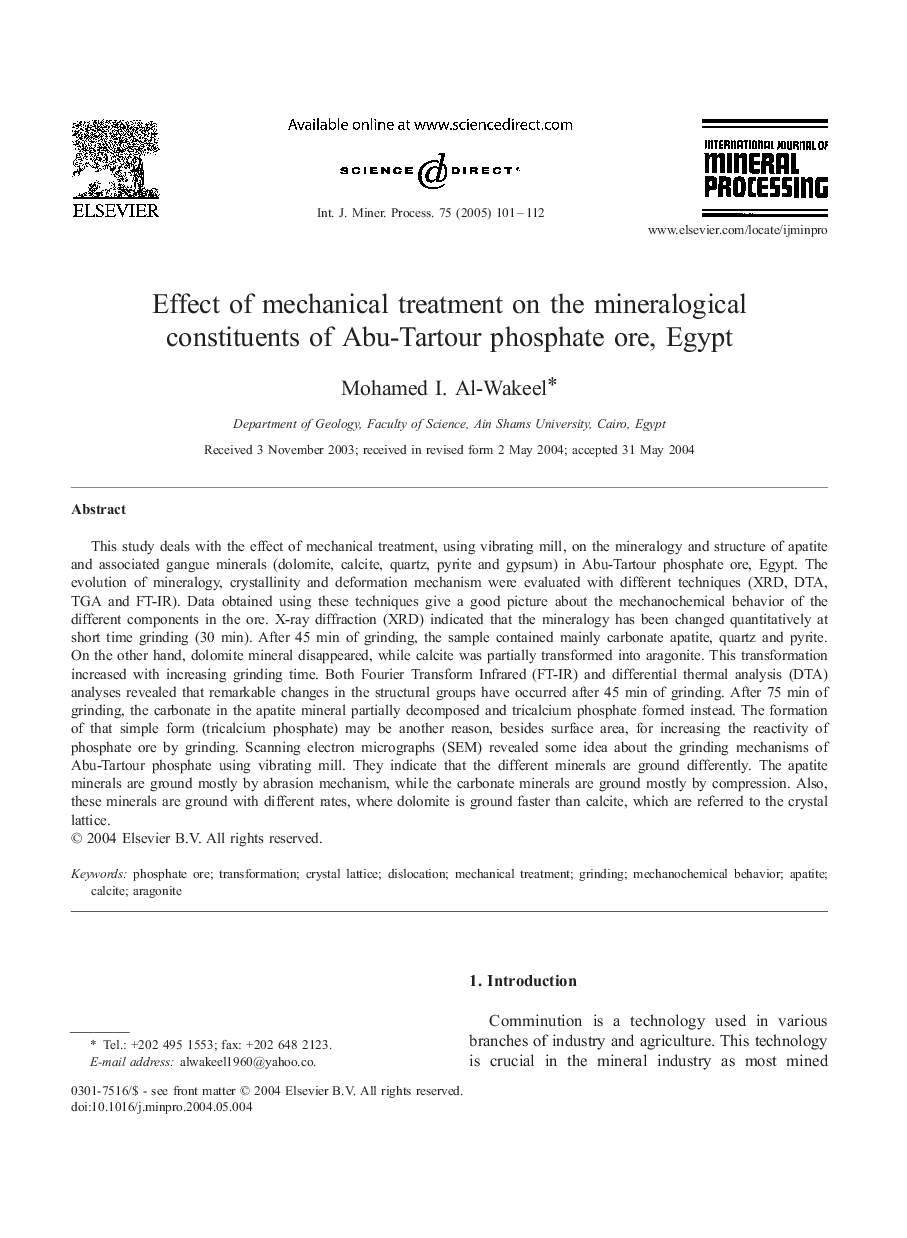| Article ID | Journal | Published Year | Pages | File Type |
|---|---|---|---|---|
| 9633082 | International Journal of Mineral Processing | 2005 | 12 Pages |
Abstract
This study deals with the effect of mechanical treatment, using vibrating mill, on the mineralogy and structure of apatite and associated gangue minerals (dolomite, calcite, quartz, pyrite and gypsum) in Abu-Tartour phosphate ore, Egypt. The evolution of mineralogy, crystallinity and deformation mechanism were evaluated with different techniques (XRD, DTA, TGA and FT-IR). Data obtained using these techniques give a good picture about the mechanochemical behavior of the different components in the ore. X-ray diffraction (XRD) indicated that the mineralogy has been changed quantitatively at short time grinding (30 min). After 45 min of grinding, the sample contained mainly carbonate apatite, quartz and pyrite. On the other hand, dolomite mineral disappeared, while calcite was partially transformed into aragonite. This transformation increased with increasing grinding time. Both Fourier Transform Infrared (FT-IR) and differential thermal analysis (DTA) analyses revealed that remarkable changes in the structural groups have occurred after 45 min of grinding. After 75 min of grinding, the carbonate in the apatite mineral partially decomposed and tricalcium phosphate formed instead. The formation of that simple form (tricalcium phosphate) may be another reason, besides surface area, for increasing the reactivity of phosphate ore by grinding. Scanning electron micrographs (SEM) revealed some idea about the grinding mechanisms of Abu-Tartour phosphate using vibrating mill. They indicate that the different minerals are ground differently. The apatite minerals are ground mostly by abrasion mechanism, while the carbonate minerals are ground mostly by compression. Also, these minerals are ground with different rates, where dolomite is ground faster than calcite, which are referred to the crystal lattice.
Keywords
Related Topics
Physical Sciences and Engineering
Chemical Engineering
Chemical Engineering (General)
Authors
Mohamed I. Al-Wakeel,
